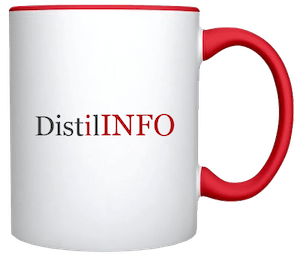Fourteen percent of industry experts say healthcare consumerism will shape the medical field in years to come.
Healthcare consumerism and patient empowerment are top healthcare industry trends, slated to change the way medical professionals approach their jobs in the near future, according to Definitive Healthcare’s 2019 Annual Healthcare Trends Survey.
The survey of 1,000 healthcare leaders, including those from the biotech, provider, financial services, IT, consulting, and life sciences sectors, revealed that consumerism will be one of the primary forces shaping the future of medicine.
As patients bear more financial responsibility for their own healthcare, they are demanding more of their providers. Patients are transforming into healthcare payers who are keenly searching for the lowest cost, the best value, and the highest level of convenience with regards to their care.
Want to publish your own articles on DistilINFO Publications?
Send us an email, we will get in touch with you.
Healthcare organizations must respond in kind with more price and care quality data transparency while offering convenient care options, such as neighborhood clinics and health IT tools.
Overall, 14.4 percent of respondents said healthcare consumerism and patient empowerment were top industry trends.
Beating out consumerism as the top industry trend was industry consolidation, earning 25.2 percent of respondent votes. As more healthcare organizations and other medical companies undergo mergers and acquisitions, providers must be agile and poised to take on an ever-changing field.
“It’s no surprise that industry consolidation is top-of-mind for healthcare professionals,” said Jason Krantz, CEO of Definitive Healthcare. “As the industry continues to evolve and shift, and health systems and IDNs increase in complexity, all participants in the industry need to stay abreast of what’s happening in order to make the best strategic decisions for their businesses.”
Telehealth was likewise ranked as a top healthcare industry trend, with 13.8 percent of respondents reporting such. Telehealth has the ability to connect patients to care in a more convenient way, allowing them to meet with providers from their own homes or from a clinic or hospital that is more centrally located.
Patients, too, value the use of telehealth in the changing healthcare market, according to a previous Definitive HC report. A 2017 survey conducted by HIMSS Analytics, recently acquired by Definitive, revealed that 70 percent of patients would prefer a telehealth visit over an in-person visit.
Surprisingly, wearable technology use ranked as the least important healthcare trend, with just about 5 percent of healthcare leaders stating such. This comes even as more healthcare professionals become interested in remote patient monitoring and patient-generated health data, both of which are important for understanding patient health outside the four walls of the clinic.
According to Definitive HC, the wearable market is projected to grow to $12.1 billion by 2021 and the remote patient monitoring market is slated to increase to $31.1 billion by 2023.
Although healthcare consumerism is viewed as a key industry trend, hospitals and clinics are falling short of serving patients, separate reports state.
The Trends in Healthcare Payments Ninth Annual Report from InstaMed revealed that healthcare organizations are slipping on providing a positive consumer experience. As more patients assume financial responsibility for their care, organizations are still hosting consumer experiences that neglect price transparency and patient-centered billing.
Seventy percent of patient respondents said their medical bill was confusing, while another 93 percent did not expect their medical bill. Sixty-one percent of patients received a bill they did not believe would be so high, while 50 percent received bills they did not expect at all. A total of 24 percent of patients were sent to collections.
“Very few consumers have been left unburdened by the increases in payment responsibility,” the report noted. “The trends in healthcare payments show no signs of the increases slowing down. As the majority of consumers owe something for their medical visits and health plan premiums, consumer choice will be king – as it is in most other industries.”
These pitfalls suggest a more patient- and consumer-centric approach. As healthcare consumerism continues to be a key industry trend, organizations must focus on both the elements that will make for a better care experience as well as a better consumer experience.
Date: April 26, 2019
Source: PatientEngagementHIT








